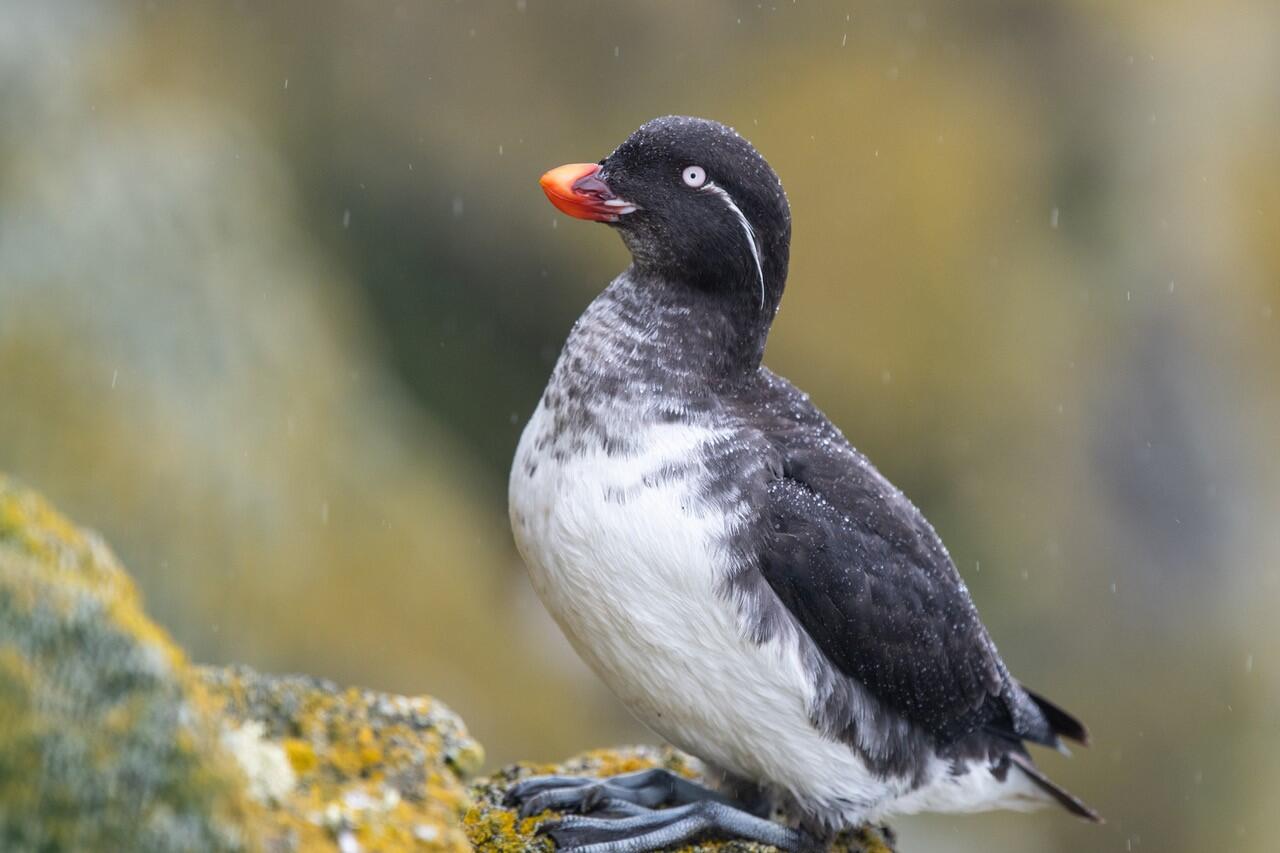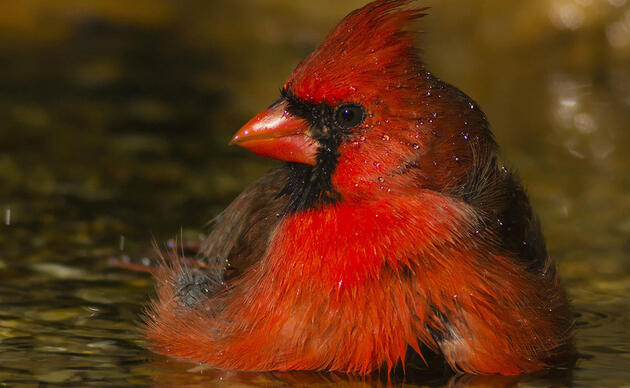Audubon Florida is honoring Latino Conservation Week by highlighting Latino members of our chapters. Now in its 11th year, Latino Conservation Week is an initiative of the Hispanic Access Foundation created to support the Latino community getting outdoors and participating in activities to protect our natural resources. Latino Conservation Week is held September 14 through 22 and includes events happening nationwide. Here in Florida, join us for events at Audubon's Corkscrew Swamp Sanctuary in Naples or the Audubon Center for Birds of Prey and the Orlando Wetlands near Orlando to celebrate in person.
About Eliana
Hailing from Colombia, the country with the most bird species in the world, I’ve had a deep love of the natural world as far back as I can remember. Visiting the family finca as a young child with my father, I relished each weekend that we would leave the city of Bucaramanga and get out into the country. At the farm, I would interact with the horses and cows and soak up everything the outdoors had to offer, from parrots to insects to palm trees. We moved from Colombia to Aruba when I was nine years old. My family had very few resources in Aruba; toys and books were not available to me growing up. Much of my free time then, when I wasn’t caring for my younger sisters or doing household chores, was spent exploring the windswept island landscapes. I would spend hours walking through the tropical dry forest, observing the plants and animals, sticking my arm down the nesting tunnels of Brown-headed Parakeets, and picking wild prickly pear cactus fruits to eat. This exposure to the natural world during my formative years in Colombia and Aruba played a large role in cultivating my interest in nature and the outdoors.
We moved to the United States when I was 15. I spoke Spanish, Dutch, and Papiamento and now needed to go to school in a fourth language: English. Following high school, college, and various jobs as a young adult, I didn’t become fully cognizant of my fascination with birds until many years later. I met my husband Marc in 2006, who is not only a birder but also a bird veterinarian. Together, we have nurtured our mutual love of nature, birds, and the environment over the last 18 years. Beyond the birds, I also love to run, make pottery and do photography.
My ornithological endeavors have taken me through so many amazing life experiences and to many remote corners of the planet. Among my memorable experiences, I've tromped through vast expanses of Alaskan tundra doing biological research with Steller’s Eiders and Emperor Geese, managed a misty cloud forest nature reserve in Ecuador, volunteered with a songbird banding station in Miami, and birded in over 25 countries on five continents. I co-founded an all-women’s birding group in Miami called The Phoebes. In 2018, I set out on a “Big Year” birding adventure with Marc, road-tripping from Florida to Alaska in our 1978 VW Bus. Following that life-changing experience, I was determined to share my knowledge of birds and travel with others. We launched our birding tour company in 2018, Birding by Bus, and have now led more than 30 birding and nature tours around the world. Our tours are booked out over a year in advance. It’s been a dream come true and a unique way of turning my skills and passion into a career and successful small business.

Q&A
1. How long have you been involved with Tropical Audubon Society? In what ways are you involved? Why did you choose to become a member?
The very first Tropical Audubon Society (TAS) field trip I attended was in 2007. I have been a board member since 2021. I strongly believe in their mission of making a positive impact for conservation and the environment in South Florida. This applies not only to birds, or manatees, seabird rookeries, or a specific endangered plant, but on a broader scale to saving entire ecosystems. There are so many urgent things happening in South Florida related to booming urban expansion and its impact on our green spaces, natural ecosystems, water quality, and quality of life. Moreover, one of the ecosystems that makes South Florida unique is our pine rocklands — a habitat considered globally imperiled and only found in South Florida and the Bahamas. Less than 1% of our original native pine rockland habitat exists outside of Everglades National Park. It’s important to me as a Floridian to see these last remnants preserved, connected, and thriving. TAS is constantly having to defend against development and has done an excellent job of fighting the battle from a political standpoint. They also focus on educating the younger generation and have incorporated many kids programs that teach the importance of the environment, wildlife, and conservation to impressionable minds. They provide so many free programs for the community that get people involved in preserving our natural world.
2. What is your spark bird?
Blue Jay has to be my first true spark bird. Before I was even a birder, I was always captivated by Blue Jays. First by their personality — their friendly, boisterous, and gregarious habits — but also by their stunning colors. I enjoy getting in touch with my artistic side, and as a teenager I drew a Blue Jay in colored pencil before I was really even familiar with the species.
3. How do you think conservation organizations could do a better job including Latino voices, or increase Latino representation in their membership?
One way I feel we could increase Latino representation is by adding more programs in the Spanish language. Many people in South Florida, coming from different places throughout Latin America and the Caribbean, don’t speak English. Providing more educational programs, workshops, and field trips in Spanish could create a greater representation from the Latin community here in Miami. Some of our TAS programs are offered as bilingual, but I’ve observed they often default to English, and the Spanish-only speakers may feel left out.
Follow Eliana's adventures at @BirdingByBus on Instagram or Facebook.
By Karina Jiménez
Stay in Touch!
Show your love of birds today. Subscribe to receive email updates about Audubon's conservation work and hear about opportunities to help birds in your area or nationwide.
Popular Stories
- Audubon Protects Florida State Parks from Development Proposals
- Audubon Florida Installs New Living Shoreline to Protect Important Nesting Habitat
- Protecting Least Tern Colonies from Crow Predation at South Lido Beach Park in Sarasota
- Audubon Celebrates Latino Conservation Week: Meet Eliana Ardila Kramer
- Audubon Celebrates Latino Conservation Week: Meet Analee Monrreal




